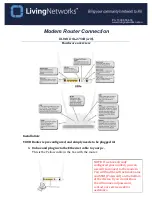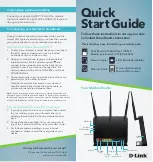
88
Configuration prerequisites
•
Create the VLAN to be specified as the 802.1X guest VLAN.
•
If the 802.1X-enabled port performs port-based access control, enable 802.1X multicast trigger
(
dot1x multicast-trigger
).
•
If the 802.1X-enabled port performs MAC-based access control, configure the port as a hybrid port,
enable MAC-based VLAN on the port, and assign the port to the 802.1X guest VLAN as an
untagged member. For more information about the MAC-based VLAN function, see
Layer 2
—
LAN
Switching Configuration Guide
.
Configuration procedure
To configure an 802.1X guest VLAN:
Step Command
Remarks
1.
Enter system view.
system-view
N/A
2.
Configure an 802.1X
guest VLAN for one
or more ports.
•
In system view:
dot1x guest-vlan
guest-vlan-id
[
interface
interface-list
]
•
In Ethernet interface view:
a.
interface
interface-type interface-number
b.
dot1x guest-vlan
guest-vlan-id
Use either method.
By default, no 802.1X guest
VLAN is configured on any
port.
Configuring an 802.1X Auth-Fail VLAN
Configuration guidelines
Follow these guidelines when configuring an 802.1X Auth-Fail VLAN:
•
Assign different IDs to the voice VLAN, the port VLAN, and the 802.1X Auth-Fail VLAN on a port,
so the port can correctly process VLAN tagged incoming traffic.
•
You can configure only one 802.1X Auth-Fail VLAN on a port. The 802.1X Auth-Fail VLANs on
different ports can be different.
•
If 802.1X clients in your network cannot trigger an immediate DHCP-assigned IP address renewal
in response to a VLAN change, the 802.1X users cannot access authorized network resources
immediately after an 802.1X authentication is complete. As a solution, remind the 802.1X users to
release their IP addresses or repair their network connections for a DHCP reassignment after
802.1X authentication is complete. The HP iNode client does not have this problem.
•
Use
when configuring multiple security features on a port.
Table 9
Relationships of the 802.1X Auth-Fail VLAN with other features
Feature Relationship
description Reference
Super VLAN
You cannot specify a VLAN as both a super
VLAN and an 802.1X Auth-Fail VLAN.
See
Layer 2
—
LAN
Switching Configuration
Guide
















































